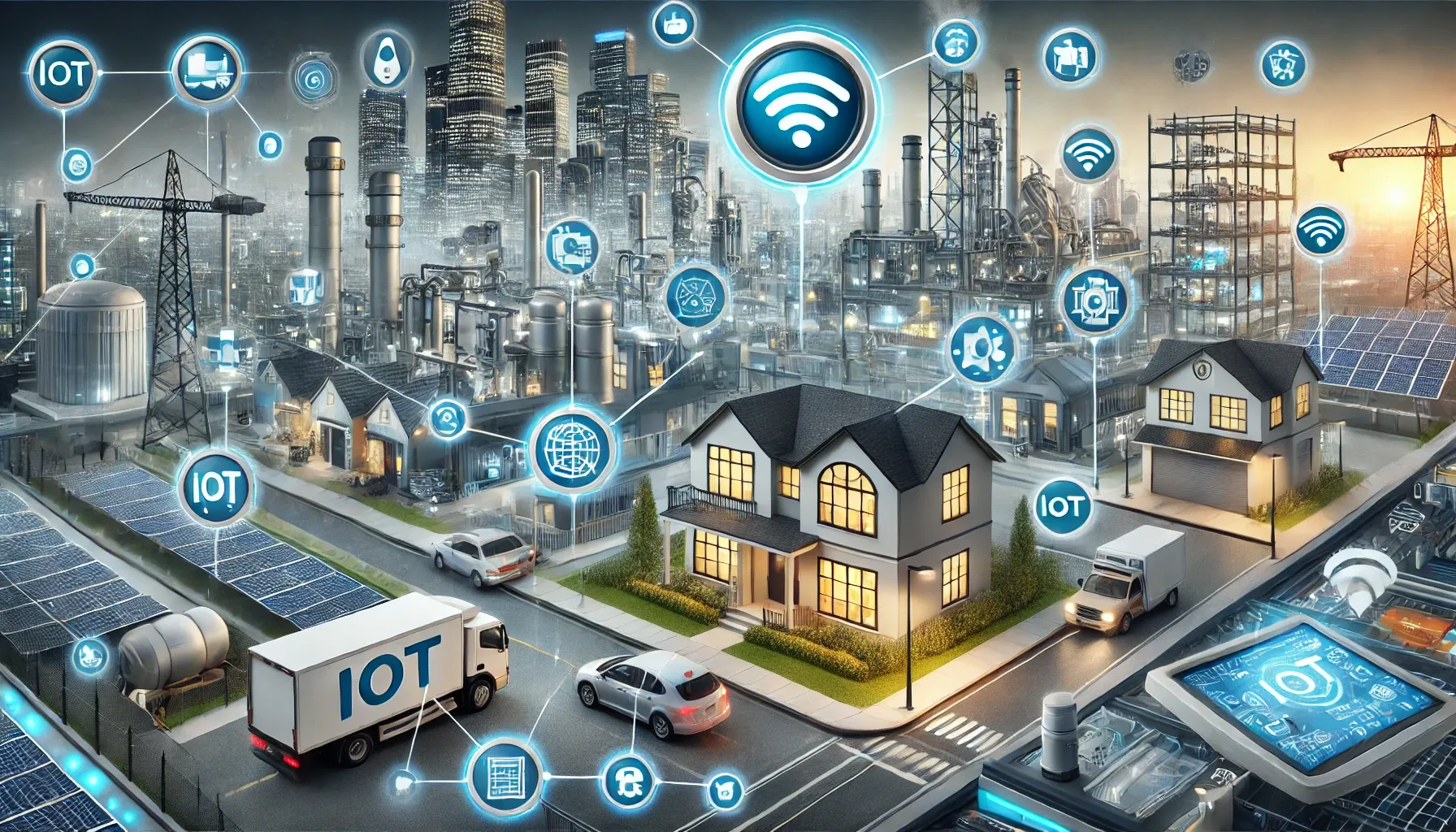What is IoT mainly used for?
The Internet of Things (IoT) has transformed many sectors by connecting devices and systems, enabling seamless communication and process automation. Below, I detail the most common IoT applications:

1. Home Applications (Home Automation)
Home automation refers to the automation of homes through devices connected to the network that can be controlled remotely or automated. Some key applications include:
-
Security systems: Smart cameras, connected locks, and motion sensors that can be controlled from a mobile app. Examples include security cameras that send real-time notifications if they detect suspicious movements.
-
Smart lighting: Bulbs that can be adjusted according to the time of day, the presence of people, or even weather conditions. Lights can automatically turn on when movement is detected in a room or turn off when no one is present.
-
Smart thermostats: Devices like Nest, which learn users’ temperature preferences and adjust heating or air conditioning to optimize comfort and energy efficiency.
-
Smart appliances: Refrigerators that track stored food, ovens that can be controlled remotely, and robotic vacuums that automatically clean when no one is home.
2. Industrial Applications (Industrial IoT - IIoT)
IIoT is transforming manufacturing, logistics, and other industrial areas by connecting machinery, sensors, and management systems. This allows real-time data collection and analysis, improving efficiency and reducing costs.
-
Predictive maintenance: Sensors in machinery that monitor their condition and performance. The data collected is analyzed to predict failures before they occur, minimizing unplanned downtime.
-
Production automation: Connected factories where robots and machines work in coordination. Systems can automatically adjust to optimize production based on demand and available resources.
-
Supply chain management: Sensors and connected devices track goods throughout the supply chain, providing real-time visibility of inventory, transportation, and demand.
-
Environmental monitoring: Sensors that monitor air quality, temperature, humidity, and other critical factors in factories or warehouses, ensuring optimal conditions for production and storage.
3. Healthcare Applications
IoT is revolutionizing healthcare with connected devices and systems that enable continuous monitoring, remote patient management, and the optimization of medical resources.
-
Remote patient monitoring: Wearable devices that measure vital signs such as heart rate, blood pressure, and oxygen levels. The data is automatically sent to healthcare professionals, enabling continuous monitoring and early intervention in case of anomalies.
-
Medication management: Smart pill dispensers that alert patients when it is time to take their medication or send notifications to caregivers if a dose is missed.
-
Hospital optimization: IoT sensors within hospitals can track equipment usage, patient movement, and resource status, improving efficiency and patient care.
4. Transportation Applications
IoT is enhancing safety, efficiency, and user experience in transportation through connected vehicles and traffic management systems.
-
Connected vehicles: Cars that communicate with each other and with surrounding infrastructure, such as smart traffic lights and road signs. This can reduce accidents and optimize traffic flow.
-
Fleet management: Real-time monitoring of the location, condition, and performance of commercial vehicles, allowing companies to optimize routes, reduce fuel costs, and improve delivery punctuality.
-
Smart toll systems: Systems that automate toll collection and reduce congestion on roads and highways.
5. Smart City Applications
Smart cities use IoT to improve citizens’ quality of life, sustainability, and the efficiency of public services.
-
Traffic management: Sensors and cameras monitor traffic flow in real time, allowing traffic lights to adjust and vehicles to be diverted to avoid congestion.
-
Smart public lighting: Connected streetlights that adjust their brightness based on the time of day or the presence of pedestrians, reducing energy consumption and improving safety.
-
Waste management: Connected trash bins that inform when they are full and need to be emptied, optimizing collection routes and reducing operational costs.
-
Environmental and infrastructure monitoring: Sensors that monitor air quality, noise levels, and the stability of bridges and buildings, enabling rapid intervention in case of anomalies or emergencies.
6. Agriculture Applications
IoT also has significant applications in agriculture, known as precision farming.
-
Crop monitoring: Sensors in fields that measure soil moisture, temperature, and other environmental factors to optimize irrigation and fertilizer use.
-
Livestock management: Wearable devices for livestock that monitor the health, location, and behavior of animals, improving production and reducing losses.
-
Agricultural drones: Drones equipped with cameras and sensors that monitor large areas of land, identifying areas that need attention and optimizing the application of inputs.
IoT is redefining how we interact with the world, offering new possibilities for automation, efficiency, and sustainability across multiple sectors.
Let me know if you need further adjustments!